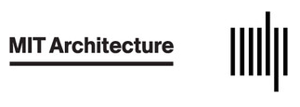Submission deadline: June 1, 2020
77 Massachusetts Avenue
Room 7-337
Cambridge, MA 02139
United States
Supply is double-faced: both stockroom and stock ticker, fixity and liquidity, provision and the provisional. Supply watches fluctuations in real time and places its bets on future outcomes. It feasts and fasts. It plans and revises, and builds bulwarks against system failure, just in case. Art and architecture navigate supply as a play of scarcity and abundance, but also of desire and necessity. Cultural and material conditions set the tone for the fecundity of ornament or an aesthetics of austerity. All the while, technologies encourage, mediate, or inhibit the proliferation of images, sounds, or information. With an eye toward present reappraisals of distribution, exploitation, and access, Thresholds 49 seeks scholarly writing and artistic interventions that address the many facets of material, political, and affective supply across time and geography.
Excess and lack are not only contemporary issues, nor are they limited to the framework of capitalism. Urban development in the Roman Republic relied on bounteous quarries in Catalonia and Alpine forests; medieval guilds managed the supply of technical knowledge through secrecy; and the rarity of lapis lazuli defined blue as the color of divinity and wealth. An architecture of surplus might look like a grain silo, an armory, or a bank vault—but when supplies are low, these buildings become art galleries. Unequally distributed access to supplies of clean air and water has given rise to enclaves of purity, from the bathhouse to the oxygen bar. From the mine, the warehouse, and the trade route, to the sculptor’s studio and the systems of the human body, supply drives the distribution of vital materials and invents new types of necessity.
Thresholds 49 aims to take stock of the ways that art and architecture have historically reflected, grounded, forecasted, and challenged the structures of supply. We consider the term broadly: as both noun (reservoir, inventory, chain…) and verb (to equip, to fulfill, to endow…). We aim for a critical account of supply: its substance, systems of exchange, and the labor and technologies that enable and maintain it, from the catalog to the ledger, and the almanac to the algorithm. What is produced when art and architecture dream a world of infinite abundance? How do objects and spaces take shape in an economy of scarcity? What are the tools that mediate production? How have sabotage, interruption, and withdrawal marked the history of supply, and how could supply suggest nourishment as much as extraction?
Submission Deadline: June 1, 2020
Please send all submissions to the editors via email at thresh[at]mit.edu with the subject heading SUPPLY SUBMISSION. Essay submissions should be in English, approx. 3,000 words, and formatted in accordance with the Chicago Manual of Style. Submission should include a brief cover letter, contact information, and bio of 50-75 words for each author. Text should be submitted in MS Word. Images should be submitted at 72 dpi as uncompressed TIFF files. Other creative proposals are not limited in size or medium. All scholarly submissions are subject to peer review.
About
Thresholds is an annual peer-reviewed journal produced by the Department of Architecture, MIT School of Architecture and published by the MIT Press. Established in 1992, Thresholds first started as a monthly zine. Today, editors produce an independently themed journal once a year, and include submissions from the history and theory of art and architecture, visual culture, media arts and sciences, film, photography, and related fields. Thresholds is held in over 150 university art and architecture libraries around the world. Content features leading and emerging scholars and practitioners from the fields of architecture, art, and culture.
Thresholds 49: Supply is edited by B. Jack Hanly and Nina Wexelblatt.



